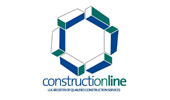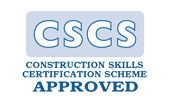Cement Screed
Just What Is Cement Screed?
I’m Andy Parkin, Managing Director of the Multi-Award Winning Speed Screed. I’m here to talk about Cement Screed.
It is one of the most traditional and well-known flooring materials. It is easy to use and can be placed onto a precast concrete floor.
The manufacture of the screed is a mixture of 1:3 or 1:4:5 of cement to sharp sand. There are a wide variety of cement screeds available and the exact composition and use of these will be detailed by the individual manufacturer.
Advantages of Cement Screed
The screed can be bonded to a concrete base or alternatively, it can be placed directly onto a damp proof membrane. It works well on underfloor heating projects which require cast-in pipes.
The screed is strong but can be further reinforced by mixing in metal mesh, or polypropylene fibres.
Cement screed may be left as the final finished surface in some mixes or it can be smoothed and used to lay a final flooring layer.
Many sand and cement screed products can be delivered ready to use on-site which provides high quality and consistent screed for use in a construction project. Some screeds are free-flowing and pumpable which makes them perfect for the creation of level surfaces.
Types and Uses of Cement Screed
In the UK we define screed according to the terms in BS8204-1:2003 and BS EN 13318. To summarise:
- Levelling screed – this provides a good level surface but does not enhance structural performance. The final flooring is then placed on top.
- Wearing screed – this will serve as the final flooring layer or as a structural topping.
- Bonded, Unbonded, Floating – bonded cement screed is placed on a substrate to achieve a good bond. With an unbonded screed, it is separated from the substrate by a membrane. A floating screed is a specific type of unbonded screed which is used with thermal or acoustic insulation.
- Cement sand/fine concrete screed – different types of screed manufactured using a specific size of aggregate.
- Self-smoothing – also known as free-flowing or pumpable screed, this is liquid and can be pumped into place, flowing and levelling without mechanical assistance.
Optimum thicknesses are dependent on the type of screed used. It is always preferable to refer to the manufacturer’s instructions.
Base preparation
When preparing a base for cement screed always consider the following:
- Proper preparation is vital for all types of cement screeds
- The concrete base must be clean. Remove all dust, grease, particles and dirt.
- Always use the correct equipment for the type of screed and its use – the manufacturer’s instructions should be followed closely.
- Always perform a final vacuum to remove any trace of rubble, debris and dirt before proceeding to lay the screed.
Still confused?
We have lots of articles on our website designed to help give you more information on the types and uses of cement screed. Alternatively, just get in touch with us and we will be happy to give you some advice.
Our Accreditations
About Speed Screed
Speed Screed Limited was founded on the key principle of providing first-class customer service. It has since built itself an impressive reputation for delivering high-quality projects across the United Kingdom.
The company’s success is built on its belief in quality work, attention to detail, on-time completion, strong working partnerships and the recruitment of top-level staff. about us >








